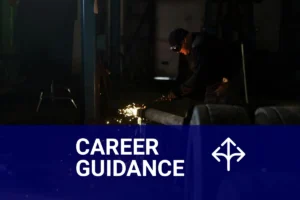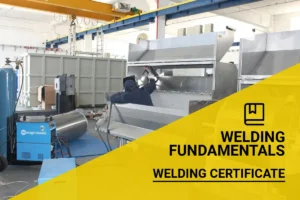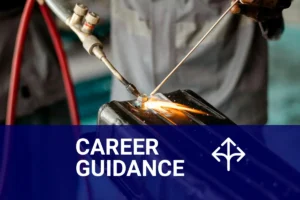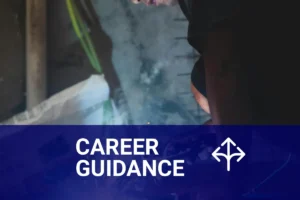What Are the Welding Certificates Called for Different Welding Positions?
Published on: May 20, 2025 | Last modified: March 4, 2025
By: Joe Carter
You may be wondering what are the welding certificates called for different welding positions? It’s super important to know this. In my experience, having the right certifications can make a big difference in job opportunities and pay rates.
In this guide, we’ll cover how welding certificates work, the different types available, steps to obtain certifications, factors affecting them, and common issues related to welding certification. We’ll also look at inspection tips, use cases for certifications, and even alternatives to welding certifications. Plus, we’ll answer questions like how many certificates in welding are there.
Contents
- What Are the Welding Certificates for Different Welding Positions?
- How Do Welding Certificates for Different Welding Positions Work?
- Types Of Welding Certificates
- Understanding the Welding Certification Levels
- Steps to Obtain Welding Certifications
- Factors Affecting Welding Certifications
- How to Address Common Welding Certificate Issues
- Use Cases Of Welding Certifications
- Exploring Alternatives to Welding Certifications
- Frequently Asked Questions (FAQs)
- Additional Reading
What Are the Welding Certificates for Different Welding Positions?
Welding certificates vary by position, such as 1G, 2G, 3G, and 4G, corresponds to specific welding techniques and positions. They ensure your skills meet industry standards.
How Do Welding Certificates for Different Welding Positions Work?
Welding certificates are important qualifications that verify your skills in various welding positions. Each certificate, such as 1G, 2G, 3G, and 4G, are specific to welding techniques and positions. For example, the 6G certification focuses on advanced skills, allowing you to weld in multiple positions simultaneously—including flat, horizontal, vertical, and overhead. Currently, there are over 30 different welding certifications recognized by organizations like the American Welding Society (AWS).
To gain a welding certification, you usually need to pass both a practical and theoretical exam. These tests evaluate your welding knowledge, safety practices, and techniques. If you want to specialize in Stick welding or MIG/TIG welding, you’ll need specific certifications.
I once made the mistake of not checking the certification type for a job; it was a real eye-opener. I realized I needed a 3G certification, which focuses on vertical welding. I learned that understanding “what welding certification do I need” is crucial for success in this field.
Types Of Welding Certificates
Certified Welding Inspector (CWI)
A CWI ensures welding quality and compliance with standards. This certification is crucial for inspection roles. To become certified, you need at least a high school diploma, some welding experience, and you must pass a rigorous examination.
Certified Welder (CW)
The CW certification shows you can weld competently. It’s tailored for specific processes like MIG (Metal Inert Gas) or TIG (Tungsten Inert Gas) in various positions. To earn this, you typically undergo hands-on testing and a visual inspection of your work.
Certified Advanced Welder (CAW)
The CAW certification is for experienced welders aiming for advanced skill levels. It covers more complex positions and processes. To achieve this, you need prior experience, often a CW certification, and you must pass an advanced skills exam. A welder’s safety is also vital and knowing how to protect against the intense light in welding can prevent injuries; this is sometimes referred to as weld flash protection.
Certified Welding Educator (CWE)
The CWE is ideal for those who want to teach welding techniques. This certification emphasizes educational methods across different welding positions. To get certified, you need experience and knowledge in welding, plus you must pass a comprehensive exam. A crucial part of advancing welding techniques includes understanding specific processes like what is involved in a hot pass in welding.
Certified Robotics Technician (CRT)
The CRT certifies your skills in using welding robots. It’s essential for automated welding positions. To qualify, you need technical training in robotics and must pass a certification exam focusing on robotic systems.
So far we covered the various welding certificate types. Next, let’s look at the different levels of welding certification.
Understanding the Welding Certification Levels
Let’s break down the welding certification levels for different positions.
| Certification Level | Position Type | Description | Clearances Required | Typical Industries |
|---|---|---|---|---|
| 1G | Flat Position | Basic certification for flat welding. It’s essential for beginners. | None | Manufacturing, Repair |
| 2G | Horizontal Position | Welding performed on a horizontal plane. Great for pipe welds. | None | Construction, Pipelines |
| 3G | Vertical Position | Focuses on welding upward, needing more skill. It’s tricky! | None | Construction, Shipbuilding |
| 4G | Overhead Position | Advanced skill set for overhead welding. High risk, high reward! | None | Aerospace, Heavy Industries |
| 6G | Piping | Highest certification that covers all positions simultaneously. | Experience required | Oil and Gas, Pipeline |
This table illustrates the various certification levels and their corresponding positions and requirements. Understanding these distinctions helps you target your training effectively.
You should now have a good understanding of welding certification levels and their significance. In the next part, we’ll discuss steps to obtain welding certifications.
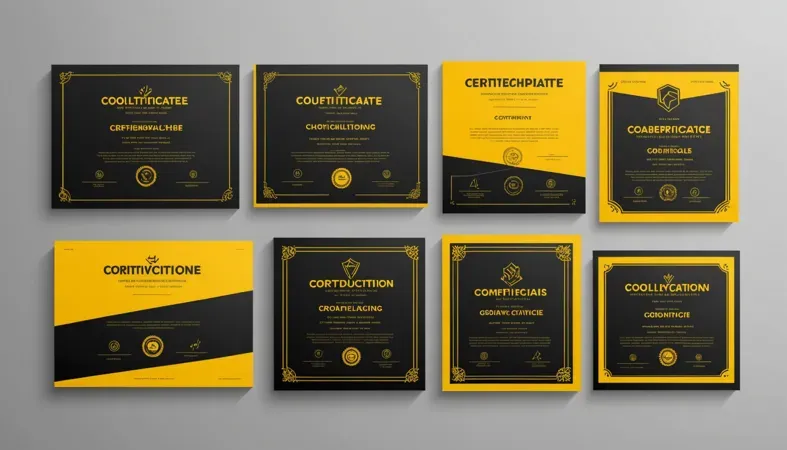
Steps to Obtain Welding Certifications
Now, we’ll cover the process of getting welding certificates for different positions.
Research Certification Requirements
Start by understanding which welding certifications you need. Common certifications include AWS D1.1 for structural welding and API 1104 for pipeline welding. Look up specific requirements based on your welding type—MIG, TIG, or Stick. Each has different criteria, so being informed is crucial.
Use resources from the American Welding Society (AWS) or local trade schools. They often list prerequisites and required actions. I found it helpful to ask professionals about their experiences—it’s a goldmine of knowledge! It’s also essential to be aware of safety concerns like potential harm to your eyes when working with welding equipment.
Complete Required Training
Attend welding classes aligned with the certifications you’re pursuing. Many community colleges offer courses that prepare you for AWS certifications. Expect to invest around 300 hours over several months. Proper training ensures you grasp core concepts and techniques for different positions. Participate in hands-on sessions. Reading about welding isn’t the same as doing it. Remember, I once missed a key technique in training that cost me on my test—pay careful attention during the practical parts! Mastering specialized techniques like welding overhead positions can significantly enhance your skillset and career prospects.
.
Pass Written Exams
After training, prepare for the written exam. These tests assess your theoretical knowledge. Some certifications may include multiple-choice questions about welding processes, safety, and materials. Aim for a passing score, usually around 70% or higher, depending on the certification.
Use practice exams and study guides. Many are available online or through your training provider. I didn’t review enough—took the test too lightly—learn from my mistake!
Demonstrate Practical Skills
Next, you need to prove your skills in a practical test. Depending on the certification, you might weld in various positions—like 2G (Horizontal) or 6G (Pipe). Your instructor will evaluate aspects like bead appearance, penetration, and overall technique. Practice specific tests before your evaluation. Knowing what to expect can make a big difference. Trust me, I practiced the 6G position repeatedly before my certification, and it really boosted my confidence. Gaining knowledge on welding upside down can further enhance your versatility and preparedness for diverse welding challenges.
Submit Certification Application
Once you pass both exams, submit your application for certification. Each certification body may have different forms and fees, ranging from $50 to over $200. Be ready with your test scores and training documents!Don’t delay; the sooner you submit your application, the sooner you’ll have your certification! I’ve seen people take too long and miss job opportunities.
We covered the steps to obtain welding certifications here. Next, we will cover factors affecting welding certifications.
Factors Affecting Welding Certifications
What factors influence the different welding certifications you need for various positions?
Type Of Welding Process
The type of welding used significantly affects the certification required. For example, MIG (Metal Inert Gas) and TIG (Tungsten Inert Gas) certifications differ in technique and skillset, leading to different testing criteria. Mastery of different welding techniques including challenges like welding uphill can enhance a welder’s expertise.
Skill Level and Experience
Your skill and experience directly impact the certifications available to you. Generally, more experience opens the door to advanced certifications like the D1.1 certification, which is essential for structural welding.
Industry Standards and Regulations
Different industries enforce various certification requirements. I once made the mistake of ignoring local standards for marine welding, which are completely different from those for structural welding. Always check regulations to avoid surprises!
Certification Bodies and Organizations
Certifying bodies like AWS (American Welding Society) have specific names for their certifications. Each organization sets its own standards and processes, influencing your certification path.
Geographic Location
Welding certification requirements can vary greatly by region. For instance, some states may require additional qualifications for high-demand industries like oil and gas, affecting the certifications you’ll need.
That covers the elements influencing welding certifications. Let’s now take a look at how to tackle typical welding certificate problems.
How to Address Common Welding Certificate Issues
Now, let’s look at specific issues that affect welding certificates.
Lack Of Practical Experience
Welding certificates require hands-on skills. Without practice, you might fail. Get training with industry-standard equipment. Aim for at least 120 hours of supervised practice before assessments.
Mastering welding techniques is enhanced by understanding how to forge weld.
Knowledge Of Certification Standards
Welding certificates must meet specific standards, like AWS (American Welding Society) or ASME (American Society Of Mechanical Engineers). Not knowing these can lead to mistakes. I once assumed local standards matched national ones—always verify before applying!
Difficulty in Passing Exams
Many welding certificates involve challenging exams. If you struggle, consider joining a study group. Practice technical questions to boost your chances of success!
Understanding Certification Validity
Always check the expiration on your welding certificates. Most last 3 to 5 years. Mark your calendar to renew in advance and avoid lapses.
Managing Renewals and Upgrades
Welding certificates often require updates as technologies evolve. Anticipate these changes and take courses early. Stay ahead to keep your skills relevant.
Use Cases Of Welding Certifications
People use welding certifications for various positions in the industry. They have unique applications such as:
- Structural Steel Fabrication: Required for welders working on buildings and bridges. Proper certification ensures quality and safety, with E7018 electrodes commonly used. This is popular in the construction sector.
- Pipeline Welding: Used for welds in oil and gas pipelines. Certifications like ASME IX guarantee critical joints won’t fail. This is crucial due to the high risks, especially in the energy sector.
- Shipbuilding: Necessary for welding hulls and structural components. Certifications assess the welder’s ability to work in marine environments and handle corrosion-resistant alloys, like steel and aluminum.
- Aerospace Welding: Focused on manufacturing aircraft components. Certifications in titanium and complex materials are vital for ensuring safety and reliability in aviation.

Exploring Alternatives to Welding Certifications
You can achieve the necessary skills and knowledge through various alternatives. For instance, hands-on training programs, like those offered by Lincoln Electric or Miller Electric, allow you to learn practical welding techniques directly. These options might be preferable for some, especially if classroom training feels overwhelming or unaffordable.
Additionally, workshops or boot camps provide intensive experiences focusing on specific skills, like MIG or TIG welding. Here’s a nugget of wisdom I’ve picked up along the way: While certifications matter, building a strong portfolio showcasing your work can sometimes open doors just as well. After all, practical experience often speaks louder than a piece of paper.
Frequently Asked Questions (FAQs)
Now let us look at some common inquiries I typically get asked about welding certifications.
What Are the Four Main Types Of Welding Certifications?
Yes, the four main types of welding certifications include structural, pipe, pressure vessel, and aerospace. Each cert focuses on different welding applications, like structural (Designed for Buildings) or pipe (Specific to Pipeline Work). Knowing these helps you choose based on your career path and industry needs.
What is the Best Welding Certification to Have?
The best welding certification to have really depends on your goals. Many consider the AWS (American Welding Society) certifications valuable since they’re widely recognized. This could open doors to more job opportunities and higher pay, often yielding salaries upwards of $60,000 ($31/hour) annually.
How Many Certifications Are There for Welding?
There are many certifications for welding, but major organizations like AWS and ASME offer about a dozen recognized types. These certifications cover various welding processes and positions, ensuring that you can demonstrate the skills that employers value most. Understanding the different welding certifications available can help you choose the right path for your career.
What Does a Welding Certification Look Like?
A welding certification typically includes the welder’s name, the certifying body, and the specific welding process covered. It may also feature unique identification numbers and expiration dates. This stuff is important because it ensures you keep your skills and credentials up to date for employer confidence.
What is a D1.1 Welding Certification?
A D1.1 welding certification refers to the AWS D1.1 Standard for Welding Steel Structures. This cert proves you can weld according to stringent rules for structural steel. It’s popular in construction and related industries, demonstrating your competency in adhering to safety and quality standards.
Thank you for joining us on this journey through the world of welding certifications. We’ve explored types of welding certificates, their operations, and the steps necessary to obtain them, alongside important considerations influencing your qualifications. Additionally, we’ve addressed common challenges, provided inspection tips, discussed various use cases, and examined alternatives to welding certifications.
In conclusion, the certificates relevant to different welding positions encompass a range of specialized tests, such as the D1.1 certification and foundational welding qualifications. Depending on your chosen career path, the certificates you require may differ, including options like structural or pipe welding certification. Ultimately, these credentials serve to validate your skills and enhance your job opportunities.
If you’re eager to delve even deeper into the intricacies of welding, feel free to visit What is Welding for comprehensive resources and insights.
Additional Reading
- National Fire Protection Association. (2022). NFPA 51B: Standard for Fire Prevention During Welding, Cutting, and Other Hot Work. Quincy, MA: NFPA.
Joe Carter is a retired welding professional with over 40 years of hands-on experience in the industry, spanning ship repair, structural welding, and even underwater projects. Joe is a master of MIG, TIG, and Stick welding. Passionate about mentoring the next generation of welders, Joe now shares his decades of expertise and practical insights to help others build rewarding careers in welding.
American Welding Society, Certification Requirements, Pipe Welding, Professional Development, Welding, Welding Certifications, Welding Equipment, Welding Positions, Welding Techniques


